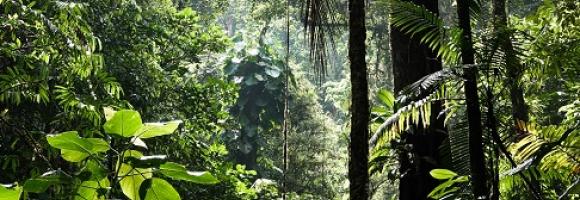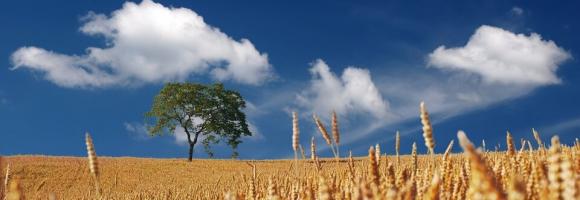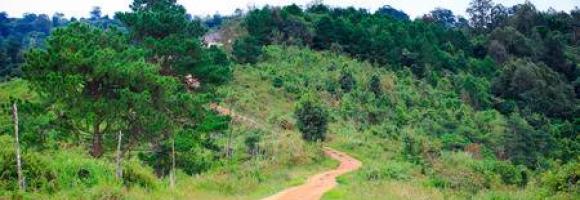How much potential impact may humans living in a protected area have on that protected area and on the habitats, species and ecological processes therein? How much of this potential impact is due to recent (15-year) increases in human population density? By identifying protected areas with low population density, it is possible to highlight locations that are likely to better conserve the species and ecological processes that are associated to more pristine conditions and that are more sensitive to the direct and indirect impacts from human activities. On the other hand, by identifying protected areas with a relatively high or increasing population density, it is possible to suggest in which locations it is likely most necessary to ensure an effective management of the human-nature relationships and the sustainability of human activities. In these locations, a priority would be to orient human activities and livelihoods in ways that are compatible with the conservation targets, such as ecotourism and other regulated recreation activities, or supporting traditional modes of rural development that have been compatible with the persistence of the biodiversity values of the protected area.
Indicator unit: The PPI assesses human population density for a given area in year 2015, expressed as the average number of people per km2 . The CPPI assesses the percent change in human population density for the same area from 2000 to 2015.
Area of interest: PPI and CPPI have been calculated for each terrestrial protected area and for the terrestrial parts of each coastal protected areas. To assess pressures around protected areas, we further computed the indicators for the 10 km unprotected buffer zone around the protected areas of size ≥ 5 km2 . PPI and CPPI are reported in DOPA Explorer for each terrestrial and coastal protected area of size ≥ 1 km2 and their unprotected buffers (values for buffers are reported only for protected areas of size ≥ 5 km2 ). We further show trends regarding the changes in rural and urban population at the country level.
---
Data Uploaded by Luca Battistella using the Digital Observatory for Protected Areas Services (2022)
PPI can be used to assess the relative potential impact that human population may have on the biodiversity and ecological integrity of a protected area, while CPPI is useful as a proxy of the changes in the potential impacts of human population in a protected area over the last 15 years. Because about 40% of the world’s population lives within 100 kilometers of the coast, a figure that is constantly increasing, this indicator is particularly useful to assess pressures on coastal protected areas. There are several reasons why a high or increasing human population density in a protected area may be of concern and lead to negative outcomes for the conservation of the habitats, species and ecological processes therein (see e.g. Mcdonald et al., 2009; Güneralp & Seto, 2013). First, human activities may increase pollution, noise and light disturbance in marine and terrestrial protected areas. Second, human settlements and built-up areas may cause, by themselves, some habitat loss and degradation, as well as trigger additional unregulated land cover and land use changes or extractive activities within the protected area. Third, human presence in the protected area may in some cases, if not properly regulated, directly reduce wildlife populations through poaching and overfishing. Fourth, some species may avoid or be found at lower abundances near human settlements, as related to the impacts just mentioned. Fifth, a higher human population density may increase the number and the spread rates of invasive species, including new diseases to which native species may have no or may only have a weak immunity response, as well as of disturbances like forest fires. Even if no invasions of alien species occur, humans may also indirectly favor the abundance of more generalist, cosmopolitan species in detriment of the specialist species that are associated to largely undisturbed habitats, which are usually those species of higher conservation concern. Although the PPI and CPPI do not separately evaluate each of these pressures or potential effects, they provide a general assessment of the potential combined magnitude of all these impacts that may be associated to human populations living in a protected area. These impacts are exacerbated in protected areas with poor management, enforcement or institutional support, and are likely to be significantly lower in effectively managed protected areas in which the impacts of humans on biodiversity and ecosystems are minimized through appropriate regulation and support to the activities, such as traditional ones, that are compatible with the conservation objectives. Protected areas can in many cases, if they are well managed, supported and funded, provide opportunities for enhancing the livelihoods of local communities, promoting job creation and reducing poverty, as well as help to maintain the ecosystem services on which many communities depend, thereby contributing both to biodiversity conservation and to the long-term sustainability of human activities in and around protected areas (Scherl et al., 2004; EU 2015). For further discussions on population growth near protected areas, we also refer to Wittemyer et al. (2008) and Joppa, Loarie & Pimm (2009) who obtain contradicting conclusions.
https://dopa-services.jrc.ec.europa.eu/services/d6dopa/dopa_41/get_de_country_pa_stats?format=json&c_un_m49=NUM
wdpaid
WDPAID
{"name":"Protected area (WDPA ID)", "show": true, "nameLocation": "middle", "nameGap": 80, "type":"category", "data":"pa_name"}
{"name":"Percent change", "nameLocation": "middle", "nameGap": 80, "type":"value", "data":"ppi_change"}
Series data
{"name":"Percent change in human population density 2000-2015", "type":"bar", "bp_count":"Percent change in human population density 2000-2015", "data":"ppi_change"}
Ascending
No
REST
un_m49
ATG, BHS, BRB, BLZ, CUB, DMA, DOM, GRD, GUY, HTI, JAM, KNA, LCA, VCT, SUR, TTO, COK, FJI, KIR, MHL, FSM, NRU, NIU, PLW, PNG, WSM, SLB, TLS, TON, TUV, VUT, BEN, BFA, BDI, CMR, CPV, CAF, TCD, COG, CIV, COD, GNQ, GAB, GMB, GHA, GIN, GNB, LBR, MLI, MRT, NGA, STP, SEN, SLE, TGO, AGO, BWA, COM, DJI, ERI, ETH, KEN, LSO, MDG, MWI, MUS, MOZ, NAM, RWA, SYC, SOM, ZAF, SSD, SDN, SWZ, UGA, TZA, ZMB, ZWE

18187





